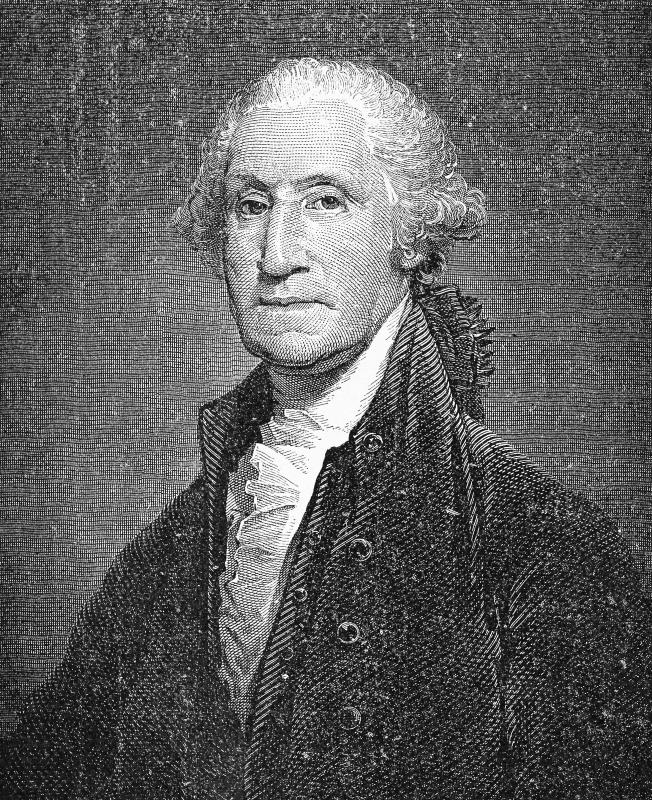At WiseGEEK, we're committed to delivering accurate, trustworthy information. Our expert-authored content is rigorously fact-checked and sourced from credible authorities. Discover how we uphold the highest standards in providing you with reliable knowledge.
Which U.S. President Was Almost Subjected to an Attempted Resurrection?
George Washington, the “Father of His Country,” who served as the first president of the United States, died at age 67 on the night of December 14, 1799. However, his death was followed by an intriguing and daring scheme to bring the former president back to the world of the living.
During his post-presidency years at Mount Vernon, his Virginia estate, George Washington usually spent around six hours per day supervising various projects on horseback. Despite exceedingly cold, wet weather on December 12, Washington carried on this practice as usual and promptly returned home for dinner with guests, though he didn’t have time to change out of his wet clothes. The next day’s weather was similar, but Washington went out anyway, and by the end of the day, he was experiencing chest congestion and having trouble swallowing and breathing.

Several doctors were sent for, including Dr. James Craik, who had attended Washington for over four decades. The patient was subjected to throat poultices, a molasses butter-and-vinegar concoction that he nearly choked on, and a tonic that caused his throat to blister. Washington’s condition deteriorated rapidly, and, per the common practice of bloodletting, around 40% of the president's blood was extracted to balance out “bad humors." Soon after 10 pm on December 14, Washington died from what is believed to have been a case of acute epiglottitis, a severe viral infection in his throat, though his treatment likely exacerbated his illness.
Dr. William Thornton, a close friend of Washington, arrived too late to help him. Thornton had been educated in medical schools across Europe and was known for pushing boundaries. However, Thornton found far more success as an architect. Though he lacked formal training, Thornton won the competition to design the U.S. Capitol building in Washington, D.C.
When he arrived at Mount Vernon early on the morning of December 15, Thornton encountered Washington's cold, stiff body. Yet he was convinced that a combination of heat, air, and blood could somehow bring Washington back to life. Thornton advocated for the administration of warm water to reheat the former president’s body and to envelop him in blankets to stimulate circulation. He proposed performing a tracheotomy to inflate Washington’s lungs and suggested transfusing lamb's blood to invigorate his veins.
Despite Thornton's belief in the feasibility of his plan, Washington's family rejected the proposition, asserting that the late president's legacy and dignity should be preserved. Yet for many years, Thornton continued to believe that his proposal to resuscitate the deceased president would have worked, writing two decades later that “there was no doubt in my mind that his restoration was possible.”
The death of George Washington:
- George Washington had a fear of being buried alive. He specifically asked his private secretary for at least three days to pass between his death and burial. These wishes were honored, and he was buried at Mount Vernon on December 18, 1799.
- Sadly, George Washington had less than three years to enjoy his retirement following two terms as the nation’s first president (1789-1797).
- Though Congress debated moving George Washington’s lead coffin to a crypt in the U.S. Capitol in the 1830s, this never came to pass, and he and his wife, Martha (1731-1802), remain buried at Mount Vernon.
AS FEATURED ON:
AS FEATURED ON:











Discuss this Article
Post your comments